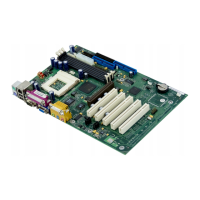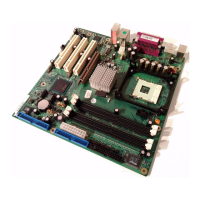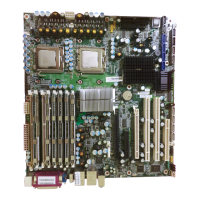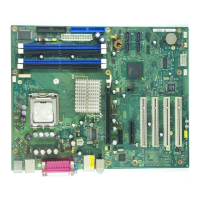Appendix I: Glossary
58 A26361-D1691-Z120-1-7619, Edition 1
PXE (Preboot Execution Environment): one of four components that together make up the Wired
for Management 2.0 baseline specification. PXE was designed to define a standard set of preboot
protocol services within a client, towards the goal of allowing networked-based booting to boot using
industry standard protocols.
RAID (Redundant Array of Independent Disks): a way for the same data to be stored in different
places on many hard drives. By using this method, the data is stored redundantly, also the multiple
hard drives will appear as a single drive to the operating system. RAID level 0 is known as striping,
where data is striped (or overlapped) across multiple hard drives, but offers no fault-tolerance. RAID
level 1 is known as mirroring, which stores the data within at least two hard drives, but does not
stripe. RAID level 1 also allows for faster access time and fault-tolerance, since either hard drive can
be read at the same time. RAID level 0+1 is both striping and mirroring, providing fault-tolerance,
striping, and faster access all at the same time.
RAIDIOS: stands for RAID I/O Steering, a type of RAID technology from Intel. RAIDIOS is a
specification used to enable an embedded I/O controller, embedded on the motherboard, to be used
as just an I/O controller or to be the I/O component of a hardware RAID subsystem. The RAIDIOS
circuit allows an I/O Processor (either embedded on the motherboard or on an add-in card) to
configure the I/O controller and service the I/O controller’s interrupts. The I/O controller and the I/O
Processor together are two of the primary components of a hardware RAID subsystem.
RAM (Random Access Memory): technically refers to a type of memory where any byte can be
accessed without touching the adjacent data, is often used to refer to the system’s main memory.
This memory is available to any program running on the computer.
ROM (Read-Only Memory): a storage chip which contains the BIOS; the basic instructions required
to boot the computer and start up the operating system.
SATA (Serial ATA): is an evolutionary replacement for the Parallel ATA physical storage interface.
Serial ATA is a drop-in solution in that it is compatible with today’s software and operating systems.
It will provide for systems which are easier to design, with cables that are simpler to route and
install, smaller cable connectors, and lower voltage requirements.
SDRAM (Synchronous Dynamic RAM): called as such because it can keep two sets of memory
addresses open simultaneously. By transferring data alternately from one set of addresses and then
the other, SDRAM cuts down on the delays associated with non-synchronous RAM, which must
close one address bank before opening the next.
Serial port: called as such because it transmits the eight bits of a byte of data along one wire, and
receives data on another single wire (that is, the data is transmitted in serial form, one bit after
another).
SCSI Interrupt Steering Logic (SISL): Architecture that allows a RAID controller, such as
AcceleRAID 150, 200 or 250, to implement RAID on a system board-embedded SCSI bus or a set
of SCSI busses. SISL: SCSI Interrupt Steering Logic ( LSI ) (only on LSI SCSI boards)
SIMM (Single In-line Memory Module): formally the most common form of RAM for motherboards.
They must be installed in pairs, and do not have the carrying capacity or the speed of DIMM
modules.
Sleep/Suspend mode: in this mode, all devices except the CPU shut down.
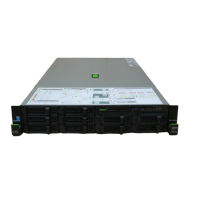
